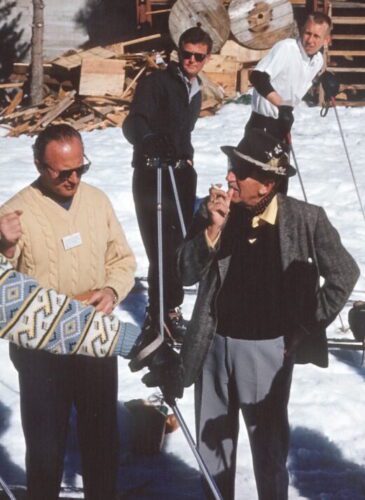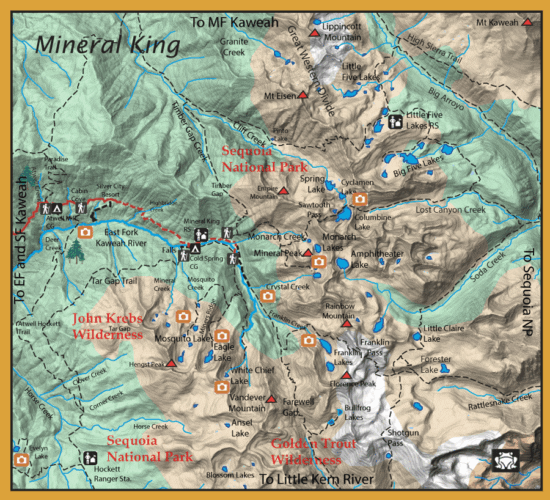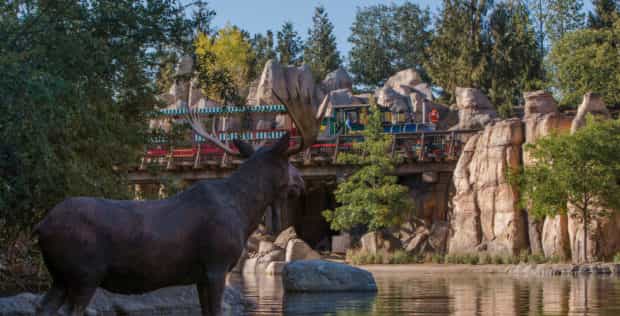Q&A: Authors discuss their new book about the unbuilt Disney ski resort
Did you know Walt Disney planned a ski resort and year-round recreation complex in California called the Mineral King? Sadly, that Disney ski resort was never built, but a new book titled Disneyland on the Mountain: Walt, the Environmentalists, and the Ski Resort That Never Was tells its story.

Walt’s plan was for a vacation destination – like “Disneyland at the top of a mountain” – where winter guests could ski, ice skate, and even be entertained by a band of audio-animatronic bears; in summer, the Disney ski resort near Sequoia National Park would offer fishing, camping, and hiking. Unfortunately, the growing environmentalist movement of the 60s and 70s prevented the idea from being a reality.

Walt [Disney] looked around to see the reporters eagerly waiting to hear about his vision for the natural wonderland that surrounded them. He was never more in his element than when he was in front of a crowd, sharing his latest dream. And this dream was one he was determined to turn into a reality, despite his failing health and despite the fact that the project was attracting the ire of a growing environmentalist movement that was hell-bent on ensuring his vision would be as unlikely to happen as a real-life flying elephant.
From Disneyland on the Mountain: Walt, the Environmentalists, and the Ski Resort That Never Was
Chapter 1, “A Magic Kingdom”
Disneyland on the Mountain traces the Mineral King story from the 1960 Winter Olympics through the environmental battle that eventually shut the project down.
Authors Kathryn Mayer and Greg Glasgow discuss the Mineral King project and their book:
How did you first learn of the Mineral King saga, and what made you want to write a whole book about it?
We are Disney fans and knew a lot about Disney history—or so we thought—but we first learned about Disney’s failed ski project while visiting the Walt Disney Family Museum in San Francisco. We were interested to learn that Walt’s partner on the project was Willy Schaeffler. Schaeffler was a famous ski coach at the University of Denver back in the day (we both worked at the school, met there, and Kathryn is an alumna). The more we researched the story, the more obsessed we became with it, and we realized how big of a story it truly was—from Walt’s passion for the project and his death in the middle of it to the rise of environmentalism and the case going to the Supreme Court. The story is much bigger than Disney simply trying to add a ski resort to its empire and it not working out.
Where and when did Walt Disney come up with the idea to build a Disney-branded ski resort in Southern California?

Walt had been a skier for years, but when he was brought on as chairman of pageantry at the 1960 Winter Olympics at California’s Squaw Valley ski resort, he started thinking seriously about what it would look like if Disney built a ski resort of its own. Shortly after the Olympics, he examined several sites in California and elsewhere, but Mineral King quickly became his top choice. He knew about the Mineral King area from a friend of his who owned land there, and he had visited a few times.
What was his vision for it?
Walt envisioned it as a year-round vacation destination that would have everything from outdoor activities like skiing, sledding, wilderness walks, and fishing to shopping, a movie theater, and even a restaurant at the top of one of the peaks. He planned to create an entertaining musical show with audio-animatronic bears; this later became the Country Bear Jamboree at Walt Disney World and later Disneyland. Even though many considered it a “ski resort,” it was likely to be so much more than that, just as Disneyland and Walt Disney World were so much more than a typical amusement park.
It sounds harmless, yet it became highly controversial. Why?
The Mineral King area where Disney wanted to build the resort was a favorite spot of hikers and campers from the Sierra Club, and they were adamantly opposed to putting a big commercial project on top of what they considered to be one of the great unspoiled wilderness spots in California. Mineral King was also directly next to Sequoia National Park, and many people were worried that the new road to the resort would cut through the park. On a larger scale, the environmental movement was just starting to take off in the mid-1960s, and a big company like Disney, which planned to not only build but keep building on national forest land, became a perfect target.

Is it true that the fight went all the way to the Supreme Court?
Yes. After a few years of fighting the project, the Sierra Club eventually filed a lawsuit against the National Park Service and the National Forest Service to block construction. Disney wasn’t named in the suit, as the Sierra Club was very worried about the optics of using such a beloved company. But the suit still, of course, affected Disney in a big way. Though the Sierra Club was initially granted a temporary injunction, the suit was appealed to the Supreme Court, which actually ruled against the Sierra Club. The Sierra Club refiled the case, which dragged on in the courts for several more years and kept the project delayed.
Were there any other long-lasting effects from the Mineral King battle?
What’s interesting about the battle is that it has had long-lasting effects on the legal system, the environmental movement, and the Disney Company. On the legal side, it has made environmental lawsuits more common and easier to pursue. The battle really lit a fire for the environmental movement and inspired other activism. On the Disney side, some of what the company had planned for Mineral King—like the Country Bear Jamboree and the PeopleMover transportation system, an attraction all on its own—eventually made its way into the parks. Disney also later embraced nature themes and natural park motifs in many of its resorts.

So, the Disney ski resort never got built?
No. For a number of reasons, it never did. Disney kept planning for Mineral King for more than ten years, but in 1978, the Mineral King area was annexed into Sequoia National Park. Disney did look at a different site in California for a ski and recreation area amid the Mineral King drama, but after similar problems, that one never got built either.
Does that make you sad? After all the years you’ve spent researching and writing this book, where do you come down on all of this? Should the resort have been allowed to be built? Was it a worthy project?
Yes and no. We certainly understand both sides. What’s sad is this was one of Walt Disney’s great, last dreams. He was trying to build this at the end of his life when he wasn’t well, and without him there to guide the project after he died, it really fell off the rails. As someone who was universally beloved, he might have been able to taper down some of the controversy and work with the people who were against it. What we learned from writing this book was that Walt was a big conservationist—he was even lauded by some of these groups, like the Sierra Club, who later fought the Disney company on the Mineral King resort. He loved nature and wildlife, so this outdoor recreation project was especially near to his heart, a genuine passion project. It wasn’t just something created from simply a profit perspective. It would have been interesting to see what he intended for the area and to get more people to see it. At the same time, the battle between the Sierra Club and Disney was really representative of important environmental issues. There were cabins that could have been destroyed, which would have changed this unique natural area. Mineral King is a beautiful place, and we can imagine how a crowded ski resort would have changed its character.
2023 is the 100th anniversary of the Disney company. What contribution do you feel it has made to American culture, and how has it changed since Walt Disney’s death?
Disney […] has touched every aspect of American and world culture—from movies and entertainment to vacation destinations. As a company, everything Disney does, people pay attention to. That was certainly the case with the ski resort battle that went on for nearly two decades, and it’s still the case today. Walt was one of a kind, and Disney would never be the same after he died, especially in the sudden way that he did. What has been most impressive, though, is that the company has really tried to stay true to its values and philosophy in everything it has done in the decades since.
Buy the Book

Disneyland on the Mountain: Walt, the Environmentalists, and the Ski Resort That Never Was will be published on Sept. 13, 2023, and can be purchased through Amazon, Barnes & Noble, Bookshop, and more. Click here for more information.
The authors bring to life the delectable crossover of Disney history and good ol’ American activism. We see an even-handed portrayal of Walt as both a conservationist and a showman and how his plans inspired real change in our country’s policies. Underdog activists and Disney buffs, be warned—you will love this book.
Jake S. Friedman, animation historian and author of The Disney Revolt: The Great Labor War of Animation’s Golden Age
Greg Glasgow is a longtime writer and journalist for numerous magazines and newspapers, including the Denver Post and the Boulder Daily Camera, where he worked for ten years as an arts and entertainment reporter and editor.
Kathryn Mayer is a writer and journalist whose work has appeared in such publications as Health, Insider, and PopSugar. She primarily writes about business and is a frequent guest on radio shows, TV shows, and podcasts.

